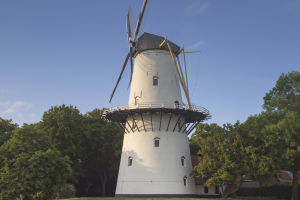Urban greening refers to the implementation of green spaces, such as parks, gardens, and trees, in urban areas to promote a healthier and more sustainable environment.
The practice of urban greening has become increasingly popular in recent years due to the negative impacts of urbanization, such as air pollution, heat island effects, and loss of biodiversity.
First, it can help improve air quality by removing pollutants and increasing oxygen levels. Trees and plants absorb carbon dioxide and other harmful gases and release oxygen into the atmosphere.
Second, urban greening reduces the urban heat island effect, which is caused by the absorption and retention of heat in built-up areas.
Green spaces can provide shade and cooling, which can help to reduce temperatures in urban areas and make them more comfortable for residents.
Thirdly, urban greening provides habitats for wildlife, which increases biodiversity.
This helps to support local ecosystems and promotes a more balanced environment.
Fourth, urban greening has positive social and economic impacts. Green spaces can provide recreational areas for residents, which can help to promote physical activity and mental well-being.
They also help to increase real estate values and attract investment in urban areas.
Incorporating green spaces into urban areas has benefits that help to improve air quality, reduce the urban heat island effect, increase biodiversity, and promote social and economic well-being.
Several methods of urban greening can be used to promote a healthier and more sustainable environment in urban areas. These include:
1. Planting Trees: Trees are an essential part of urban greening as they absorb carbon dioxide and other pollutants, provide shade, and help to reduce the urban heat island effect.
2. Creating Green Roofs: Green roofs involve covering the roof of a building with vegetation, which can provide insulation, reduce the amount of stormwater runoff, and improve air quality.
3. Building Green Walls: Green walls involve covering the exterior of a building with vegetation, which can help to reduce the urban heat island effect, improve air quality, and provide insulation.
4. Developing Urban Gardens: Urban gardens involve creating green spaces within the urban environment where people can grow their produce.
5. Building Public Parks and Green Spaces: Public parks and green spaces are essential for promoting urban greening. They provide recreational areas for residents, help to improve air quality, and provide habitats for wildlife.
6. Implementing Green Infrastructure: Green infrastructure involves using natural systems to manage stormwater runoff, improve air quality, and reduce the urban heat island effect. Examples of green infrastructure include rain gardens, bioswales, and permeable pavements.
In conclusion, many methods of urban greening can be implemented to promote a healthier and more sustainable environment in urban areas.
The key is to ensure that the green spaces are designed and maintained in a way that maximizes their benefits and minimizes any negative impacts.


